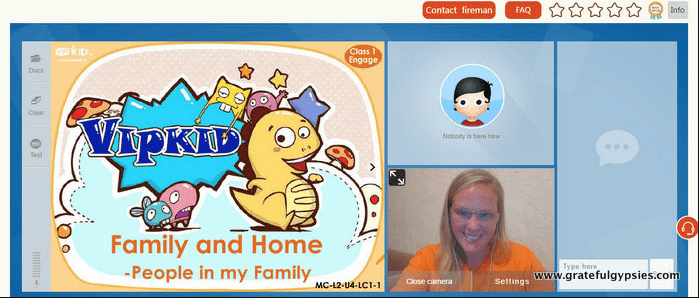Coleen Monroe is a Bridge grad and experienced ESL teacher currently working at a language institute in China. Here, she shares her insight into the growing use of centralized lesson plans in schools and online ESL companies.
If you’ve joined ESL/EFL in recent years, you may be having a little trouble finding guides that suit the current ways that schools, language institutes, and online ESL companies expect lessons to be planned. Recently, some companies and schools have moved toward centralized lesson plans. Let’s take a look at the ways that this development may influence you as an ESL teacher and what you can do to make the most of your lessons!
What is a centralized lesson plan?
Up to now, lesson planning has generally been considered the purview of the instructors themselves in ESL. You may have taken a whole TEFL/TESOL course on lesson planning, and the majority of TEFL/TESOL certifications focus (rightly) on planning lessons. However, in recent years, the actual practices on the ground have started to change.
Many ESL/EFL companies now employ content creators to make the lesson plans and deliver them to instructors. This varies quite a lot; some major companies provide enormous lesson plans that have way too much detail to be useful, but others may provide a scaffolded or skeleton plan and expect the teacher to fill in the gaps themselves. The general idea appears to be that companies would prefer not to pay teachers for as much planning time or they would like to have a more uniform product to offer their customers.
Generally, these provided lesson plans will have lesson objectives, activities, page numbers, and timings pre-fitted to a specific topic. In some places, teacher pay can even be linked to whether you are able to deliver a pre-planned lesson to the satisfaction of an observer.
Need a last-minute ESL lesson plan? Here are several that can be adapted to any class!

Lejla, a TEFL/TESOL teacher in Egypt
Why are ESL schools and online companies using centralized lesson plans?
If you’re new to teaching, you’ll want to get initial training and qualification with a TEFL certificate. You can explore our online TEFL courses to get started!
What are some benefits of centralized lesson plans?
It’s helpful for beginner teachers
If you’re just starting out in ESL, it can be really helpful to have a scaffold upon which to build your lesson. You may not have all of the tools that are needed to be able to create your own lesson plans and hit all the objectives when just starting out. Centralized lesson plans can make it so that you can focus on the delivery of the content instead of thinking about what to teach.
Find out more about using objectives in ESL lesson planning.
It saves you valuable time
In addition, centralized lesson plans can cut down on teacher planning time. You may be able to work fewer office hours, allowing you to pick up additional shifts for more cash or pursue hobbies.

English teacher Rachel tutoring with VIPKid
It makes teaching back-to-back lessons online easier
If you are teaching English online, you may find that you have an easier time with a centrally-planned lesson. Online teaching can sometimes require more structure to keep things going, and you may have a different lesson and level for each individual student. Having access to centralized lesson plans makes it easier to transition between level changes quickly, for example, if you have back-to-back lessons.
What are some downsides?
Experienced teachers may find them limiting
For those who’ve been teaching for a while, it can feel a little stifling to be handed a lesson plan. You may disagree with the ways that the plan lays out the lesson, or perhaps the activities that are contained therein don’t seem to fit your students.
A teaching philosophy can help you when writing your own lesson plans or following pre-planned lessons. Find out how to create your own ESL philosophy of teaching statement!
They may not meet the needs of your students
It can also be hard to give feedback and change the lesson plans if the company is too big. Some places are outsourcing lesson planning to other locations worldwide, or you may find that the person making the lesson plans was never an ESL teacher! It can be very hard to match the lesson to your particular students and their needs if you are expected not to deviate from the centralized plan.
You may be evaluated on how well you follow them
In addition, you may be observed and be required to prove you can follow the provided plan. This goes for online as well as in-person classes. In this case, there may be little wiggle room, and you may need to ask for clarification from the observer beforehand about their expectations and needs.
Check out the most popular ESL teaching methods that every teacher should know.

Teacher Juicy Mae plays a game with her ESL student online.
I’ve been handed a centralized lesson plan. How do I make sure that it actually works for my students?
If you have the option to use the centralized lesson plan as a scaffold and add your own techniques, activities, and objectives, you should definitely do so! Take the time to plan the lesson even though it’s “already planned.”
This means dedicating a period of time to sit down and think about whether the lesson has correct timings for activities and whether you may want to add anything additional to the plan to help it fit your own students. In theory, every class is different, so it might even be a question of “For class 5A, play nouns musical chairs. Class 5B has too much energy. Play a seated card game with the same words.”
Don’t forget that a lot of teaching is like a good improv performance; you can’t just keep going with an activity that is failing because a piece of paper tells you to! Make adjustments on the fly if needed, and work to make your classes tailored to your students and their needs.
Need to create an ESL grammar lesson plan? Read these tips first!
Additional tips for following a pre-planned lesson
As ESL teaching moves into the middle of the 21st century, things will change and there will be new ways to interact with students. If you find yourself with centralized lesson plans, you can still look for ways to adjust them to your abilities and those of your students.







